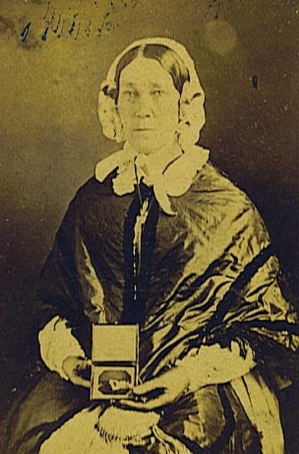It’s well known that mourning practices were an art form in the 19th and early 20th centuries. When I did quite a lot of research on mourning for my Gilded Age family saga, the Waxwood Series, there was no shortage of information. These rituals and fascination with death is the subject of a future blog post.
Indeed, when it came to mourning death, early Americans were experts. But when it came to explaining death, that was a different story. It’s understandable when we think of how uncomfortable any discussion of death makes many of us feel. I have a friend who builds alters to honor the dead, and she’s always saying how difficult it is for her to talk about what she does because she’s afraid of getting into morbid territory and making people squirm.

Photo Credit: Woman in mourning, carte de visite photograph, 1860s, Nashville, Tennessee: Et0048/Wikimedia Commons/PD US expired
And yet, in cases where death isn’t obvious (such as from illness or accident), it’s the law (then and now) to investigate the cause to determine if foul play was involved. For this, a medical examiner is called in and a pathologist (who may or may not be the medical examiner) conducts an autopsy on the body.
In the 19th and early 20th centuries, you couldn’t even say American forensic pathology was in its infancy. More like it was in the womb. The role of the medical examiner was pretty ad hoc and didn’t even officially exist until the 1930s. Examiners were not explicitly trained in pathology and often were local doctors who were good at treating the living but had little experience examining the dead. They were amateurs in pathology, though there’s no doubt many of them did the best they could.
In addition, medical examiners and pathologists were, like policemen and mayors, government-appointed, and as such, they were subject to the kind of corruption that ran rampant in the 19th and early 20th centuries (until the Progressive movement called for reforms). In other words, these men could be bribed to cover up evidence for various reasons. Maybe the victim was a well-respected citizen of the town and the pathology brought up something that pointed toward a less-than-stellar life the influential family didn’t want to be made public. Or maybe the examination of the victim showed foul play that would require important people to be involved in the case who didn’t want to be involved. The examination might even implicate someone important to the town in a dastardly crime so evidence needs to be covered up or distorted. I’m reading a true crime book right now about the death of a woman in the early 20th century where the writers surmise this is exactly what happened.
Pathology (whatever little of it there was in the early 20th century) plays a role in Book 3 of my Adele Gossling Mysteries, though not in a corrupt or gruesome way. A doctor is asked to write out a new death certificate because what looked like an accident proves to be anything but. It was possible to retract the death certificate if further examination suggested otherwise. This is what starts the investigation into Thea Marsh’s death in the book.
Death At Will is coming out at the end of this month, but you can grab your copy now at a special preorder price here. And did you know Book 1 of the series, The Carnation Murder, is now free? Get your copy here.
If you love fun, engaging mysteries set in the past, sign up for my newsletter to receive a free book, plus news about upcoming releases, fun facts about women’s history and mystery, and more freebies! You can sign up here.





